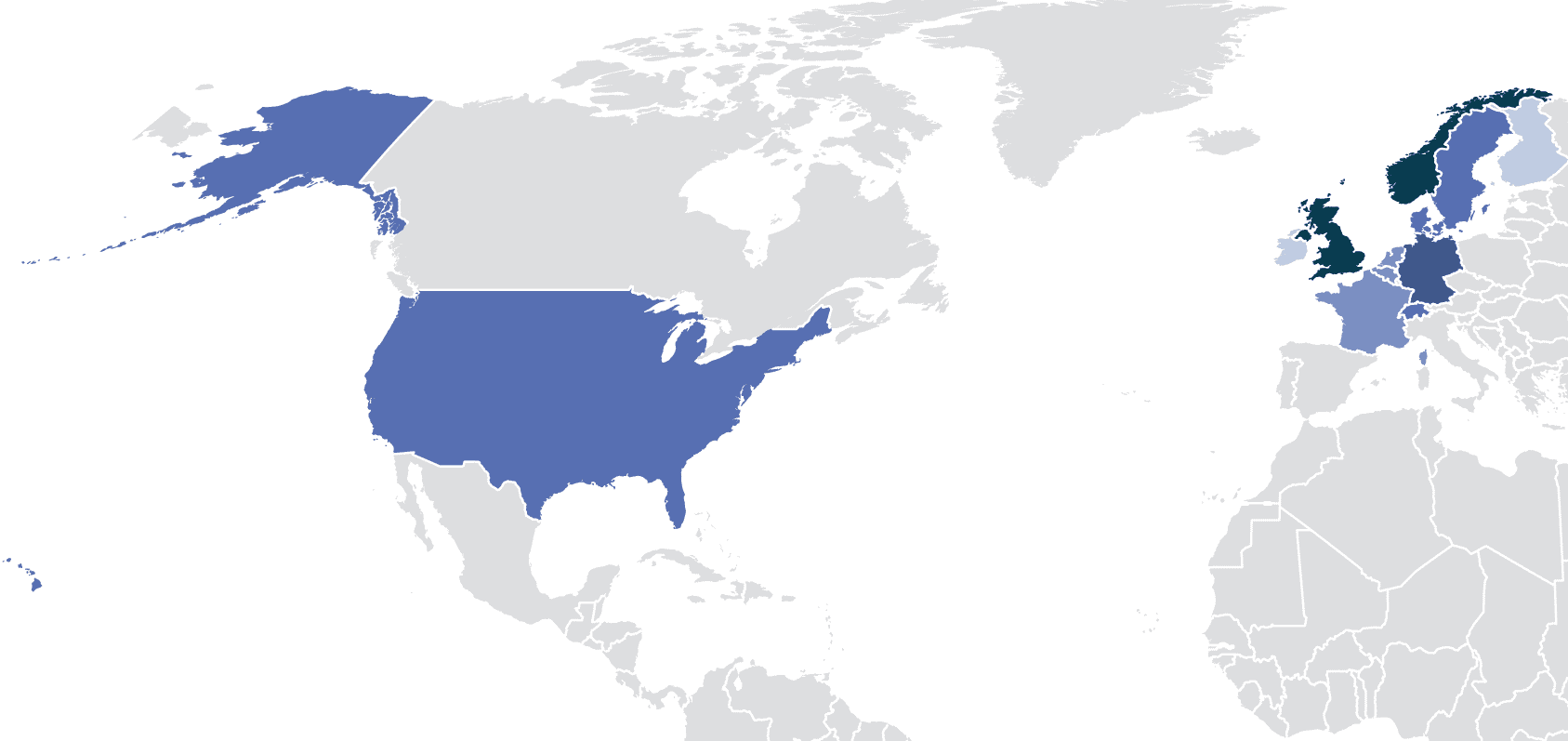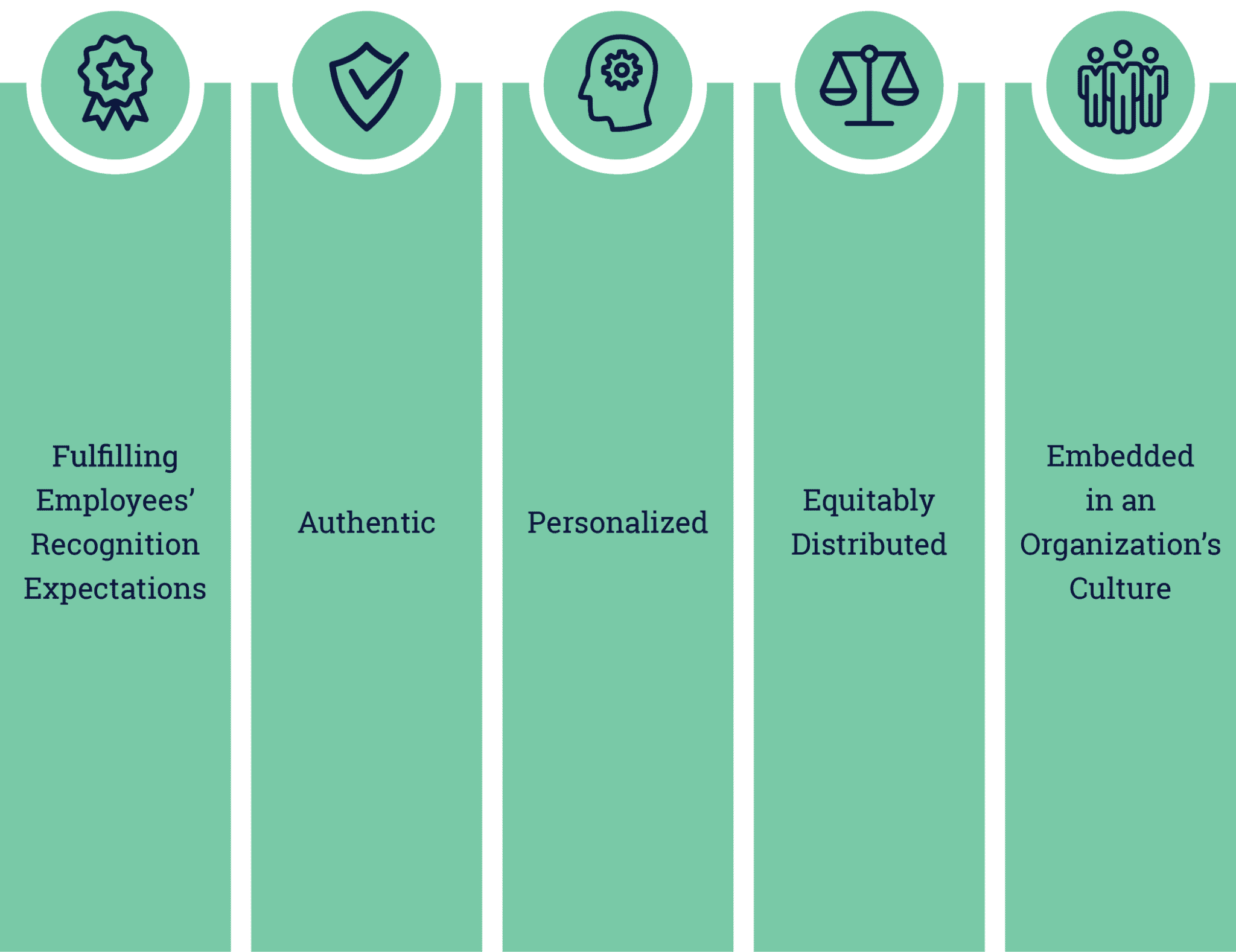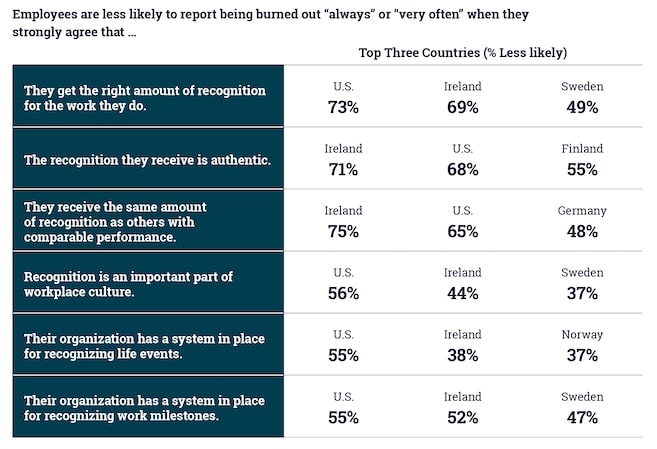The Ultimate Guide to Employee Wellbeing
Did you know that employees are 2x as likely to evaluate their overall lives more positively when they feel a strong sense of wellbeing at work?

That’s not a surprise or a secret: New employee wellbeing research from Gallup and Workhuman, "Amplifying Wellbeing at Work and Beyond Through the Power of Recognition", shows that employees are – and have always been – deeply concerned about their wellbeing at work. And with the quiet quitting rallying cry becoming louder and more forceful, organizations are starting to take notice.
Many organizations realize they have a compelling moral and human responsibility to support the wellbeing of their employees. After all, happy, healthy, and engaged employees lead more productive and fulfilling lives in and outside of the office.
What they may not realize, however, is there is a compelling financial motivation as well: Considering the cost of voluntary turnover due to burnout alone is 15–20% of payroll each year, protecting and promoting employee wellbeing amounts to hundreds of millions of dollars toward organizations’ bottom lines annually.
So, what can your organization do to foster employee wellbeing, creating the right conditions for your people to thrive? What can you do to provide your employees with opportunities to learn and grow, to build their strengths, and to unlock their full potential?
Read on to discover more about employee wellbeing, with insights and analysis from Gallup and Workhuman’s latest research.
Employee Wellbeing Statistics
To paint the scene about employee wellbeing, let’s start by looking at a few statistics:
- The corporate wellbeing market is estimated to be $20.4 billion in the U.S.Opens in a new tab and is forecasted to grow to $87.4 billion in 2026.
- The Future of Work HR sentiment surveyOpens in a new tab found that 68% of senior leaders (of which 40% were CHROs) rated employee wellbeing and mental health as a top priority
- Even before the pandemic, GartnerOpens in a new tab research revealed that 45% of wellbeing budget increases were being allocated to mental health and emotional wellbeing programs
- Harvard studies showOpens in a new tab that gratitude is positively correlated with happiness, stronger relationships, and better mental wellbeing overall
- A survey by Virgin PulseOpens in a new tab found that 85% of companies say wellbeing programs support employee engagement – and that engaged employees tend to contribute more than what’s expected of them, leading to better job performance and organizational outcomes
See also: 20 Impactful Workplace Wellness Statistics
It’s easy to see that strategic investment in employee wellbeing translates to better business outcomes, but let’s take a deeper dive into wellbeing to understand its true impact on employees and organizations alike.

What Is Employee Wellbeing?
The first step in fostering employee wellbeing is understanding what it is. Equally important is to understand what it’s not. Wellbeing is often conflated with “health,” but it isn’t only about the absence of illness or injury, or even the presence of physical fortitude.
Employee wellbeing transcends health and happiness, although that’s certainly a key part. It encompasses everything people do and everything that’s important in their lives: their careers, communities, and social connections; their physical, mental, and emotional health; their standard of living and financial stability.
Wellbeing is a barometer for a life well-lived – and it’s the foundation for employees leading fulfilling lives at work and outside of it.
The Factors of Employee Wellbeing
By systematically studying what allows people to thrive around the world, Gallup has uncovered the five essential elements of wellbeing:
- Career wellbeing refers to how people spend their days and whether or not they generally like what they do with their time.
- Social wellbeing refers to people’s relationships with others and whether or not they have meaningful connections and positive interactions with others.
- Financial wellbeing refers to people’s economic stability and standard of living and whether or not they the funds they need to provide for themselves and their families.
- Physical wellbeing refers to people’s health and physical condition and whether or not they have the energy and endurance to be productive each day.
- Community wellbeing refers to people’s daily environment and whether or not they feel satisfied, connected, and engaged with the areas in which they live.
Why Is Employee Wellbeing Important?
Wellbeing is a universal need of employees that requires constant maintenance and attention. In fact, Gallup data shows it continues to be one of the most important factors for employees when deciding where to take a job – and whether to leave one.
Wellbeing for employees is also a high-stakes foundation to organizational outcomes. Wellbeing (or lack thereof) influences outcomes with serious price tags, including hindering employee productivity and engagement as well as leading to burnout and turnover.
See also: Workplace Wellbeing: Create a Happier and Healthier Work Environment
The Impact of Neglecting Wellbeing
The costs of neglecting the wellbeing of employees are real and significant, for employees personally and for their employers. The Gallup-Workhuman research points to two eye-opening wellbeing statistics that should sound the alarm bells for organizations globally:
- $20 million of opportunity loss for every 10,000 employees due to low wellbeing and its drain on performance
- $322 billion global cost in turnover and lost productivity when low wellbeing shows up as employee burnout
With recent viral catchphrases like quiet quittingOpens in a new tab demonstrating that employees, on the heels of the Great Resignation, are demanding more of their employers, organizations would do well to prioritize wellbeing – and reap the benefits.
The challenge, as seen by the even more recent productivity paranoiaOpens in a new tab catchphrase, is aligning employee needs and expectations with those of their leaders in a post-pandemic landscape that has left workplaces reimagined and workers forever changed.
How Do You Improve Employee Wellbeing?
Neglecting the wellbeing of employees is one of the biggest mistakes organizations can make in this new world of work – and a costly one at that. Most employers don’t do it maliciously or even apathetically – they simply don’t equate employee wellbeing and productivity.
What’s more, many organizations conflate wellbeing with wellness, investing in costly Employee Assistance Programs (EAPs) and health insurance offerings, each important in their own right but not as a substitute for a more holistic wellbeing strategy.
Improving Wellbeing with Strategic Recognition
Organizations are missing out on one of the most effective and affordable ways to improve employee wellbeing: Simply recognizing their employees for who they are and what they do.
The truth is, workplaces shape wellbeing every day – for better or for worse – by the way they treat their employees. Leaders who strategically incorporate recognition into their culture can drastically improve employees’ perceptions that they’re valued, cared for, and respected as people. This makes recognition a low-cost, high-impact way to move the needle on wellbeing.
Want to see how Workhuman’s social recognition platform can transform your organization's employee wellbeing strategy? Learn more today.
Gallup-Workhuman’s large-scale study of more than 12,000 employees across 12 countries demonstrates that strategic recognition is associated with improved employee recognition across four key dimensions:
- Increased overall life evaluations: Employees are as much as two times as likely to evaluate their lives and futures more positively.
- Reduced levels of burnout: Employees are up to 90% less likely to report being burned out at work “always” or “very often.”
- Improved daily emotions: Employees are up to two times as likely to report having experienced gratitude the previous day and about 40% less likely to report having experienced a lot of stress, worry, and sadness.
- Better social wellbeing: Employees are seven times as likely to strongly agree that they have meaningful connections or a best friend at work, and as much as 10 times as likely to strongly agree that they belong at their organization.

Indeed, strategic recognition is related to lower levels of burnout at work, improved perceptions that the organization cares about the wellbeing of employees, and more positive life evaluations overall.
When organizations create an environment in which employees consistently receive high-quality recognition, these benefits translate into clear ROI: employee engagement, company loyalty, brand ambassadorship, and more.
Related: Learn how to avoid burnout or combat burnout if you're already feeling it.
An International (Missed) Opportunity
While the Gallup-Workhuman study points to the opportunity to improve wellbeing through recognition, it also shows in each of the 12 countries surveyed there is considerable room to improve strategic recognition practices.
Most organizations are not getting the benefits of strategic recognition, which means companies are missing out on the gains in engagement and productivity that high-quality recognition can catalyze.
Organizations across the map need to ask whether the way they recognize employees is really fostering engagement and wellbeing – or needs to be reassessed.
To do this, leaders must first see recognition as a strategy that needs to be invested in and then scale it thoughtfully to change the culture of their workplaces – and, ultimately, employees’ lives.
In a previous study, Gallup and Workhuman found that recognition acts as a buffer against job stress and enhances multiple aspects of wellbeing. The most potent recognition is strategic recognition – as in, recognition that abides by the five key pillars of recognition:

The same study, "Unleashing the Human Element at Work: Transforming Workplaces Through Recognition", highlights the benefits of strategic recognition even further: An organization of 10,000 employees can save up to $16.1 million in turnover costs annually by making recognition a strategic priority.
The current study demonstrates that recognition has these and other wellbeing-boosting effects throughout a number of countries.
Put simply, recognition is a force for good in workplaces globally – a “win-win” strategy that supports business outcomes and employees’ overall happiness and success in everything from their jobs to their levels of energy to their social interactions.
Employee Wellbeing Strategy: Next Steps for Leaders
While both organizations and employees may agree – conceptually – with supporting the wellbeing of employees, there appears to be a disconnect when perception meets reality.
A recent survey of members of the Gallup CHRO Roundtable shows that 65% of CHROsOpens in a new tab strongly agree that their organization cares about the overall wellbeing of their employees, while only 24% of employees say the same.
Gallup data showsOpens in a new tab the consequences of appearing apathetic about wellbeing are detrimental: particularly burnout and attrition. The onus is on business leaders to show employees, with real and meaningful actions, that they care about their wellbeing.

Recognition is universally shown to amplify wellbeing. So, when leaders prioritize strategic recognition, employees are more likely to perceive that they care about wellbeing.
Leaders should take these five proactive steps to implement an employee wellbeing strategy rooted in recognition:
1. Be strategic about recognition
Organizations get the most out of their investment when they provide employee recognition strategically, according to the five pillars of recognition: 1) fulfilling, 2) authentic, 3) equitable, 4) personalized, and 5) embedded in organizational culture.
2. Make smarter investments in wellbeing
Leaders should examine how they allocate resources for wellbeing and consider shifting funds to recognition. It comes with a compelling ROI, promoting not only employee wellbeing, but also retention, engagement, performance, and culture.
3. Integrate wellbeing and recognition practices
Leaders should intentionally and explicitly design initiatives to conjoin wellbeing and recognition. For example, acknowledge wellbeing-related achievements and use company-wide recognition events as an excuse to boost social wellbeing by being together.
4. Upskill managers
Managers play a vital role when it comes to recognizing their teams and encouraging their direct reports to join in. Leaders should educate managers so they can see the connection between recognition and wellbeing and the importance of both.
5. Lead by example
While everyone must do their part to create a recognition-rich work environment, the effort starts with dedicated leaders. It’s important that they set the tone for both recognition and wellbeing activities – such as participation in volunteer events.
Leaders should encourage others to join the charge: saying thank you and good job, giving shoutouts for shared milestones, etc.
Every action counts – and, in time, a culture of recognition will take hold.
FAQs
What are employee wellbeing examples?
Promoting employee wellbeing in the workplace involves more than providing healthy snacks and investing in ergonomic desk chairs.
The best wellbeing initiatives take a holistic view, encompassing everything people do and everything that’s important in their lives – in other words, their career, social, financial, physical, and community wellbeing.
If someone runs a 5K, volunteers in their community, or pursues a special hobby with their kids, celebrate it to make them feel valued and cared about by their organization.
How can you support employee wellbeing?
When it comes to supporting employee wellbeing, it’s all about demonstrating that you care about your employees as people!
One of the best ways to do this is to recognize employees who participate in activities that support their health and wellbeing.
Showing enthusiasm about events in employee’s lives communicates that their holistic success and wellbeing matter to you.
Is there a difference between wellness and wellbeing?
Yes. Employee wellbeing programs focuses on physical health (exercise programs, healthy eating, ergonomics), while wellbeing is much more comprehensive (physical, mental, emotional health, in addition to career, social, financial, and community wellbeing).
In that sense, wellness is a component of overall wellbeing.
Conclusion
In today’s ever-evolving workplace environment, employee wellbeing is more than a “nice to have” – it’s critical to employee engagement and business outcomes.
It stands to reason that employees who feel their best, do their best, which is why great workplaces prioritize employee wellbeing and reap the benefits.
Organizations can only be as resilient as their workforces, which means that when employees are thriving in their lives – when their wellbeing is strong – they make their organizations stronger, too.
Gallup-Workhuman research points to the significant opportunity gains organizations can realize by fostering employee wellbeing – and, conversely, the opportunity loss as a result of overlooking it.
It's clear from the data that organizations can harness the full power of their people by simply recognizing them for who they are and what they do.
The power of a simple “thank you” goes a long way toward amplifying employee wellbeing – and bolstering company’s bottom lines.
About the author
Stacy Thompson
Stacy Thompson is senior director of content strategy & activation at Workhuman. A lover of language, Stacy focuses on bringing company stories to life from ideation to execution. A Midwestern native, Stacy lives in Billerica, MA with her husband, two kids, and two cats – and spends her time outside of work running, skiing, writing, reading, and yoga-ing.